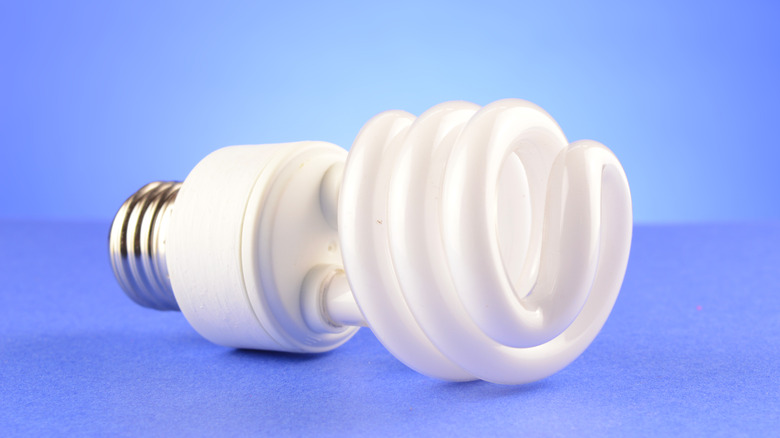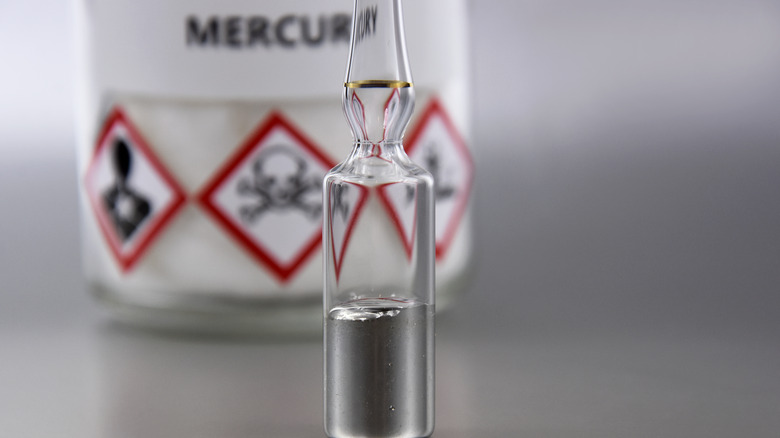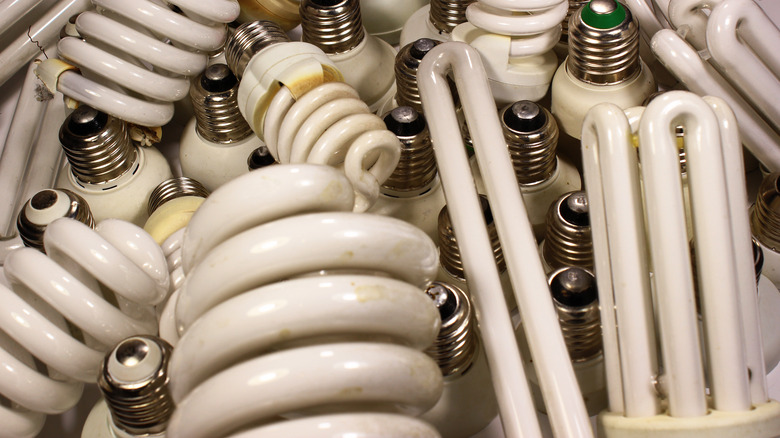Why You Should Stop Using CFL Light Bulbs Immediately
The hugely popular compact fluorescent light (CFL) bulbs with their signature corkscrew design were invented in 1976. Prohibitively expensive at first, they didn't enter the mainstream until the early 2000s. A drop in price and legislation such as 2007's Energy Independence and Security Act phasing out traditional bulbs, boosted their popularity, as did the compact fluorescents' early reputation as energy savers. So what's not to like?
For one, CFL's standing as an energy-efficient option is overstated, as noted by All Electric Services. Plus, as technology continues to advance, better options than CFL bulbs are hitting the market. Although fluorescents have surpassed conventional incandescent bulbs as a lighting choice by consumers, they are being left in the proverbial dust by LED lightbulbs in terms of color, energy consumption, possible safety, and pricing, according to Viribright. What's more, CFL bulbs come with a host of potential hazards that will convince you to ditch them in favor of a better option.
CFL light-sensitive health issues
CFL bulbs have been proven to emit potentially harmful ultraviolet radiation, a definite cause for concern. In fact, Save On Energy references a Stony Brook University study concluding that the bulbs, like other fluorescent lights, do in fact send out enough radiation to cause symptoms ranging from dizziness to eyestrain. Even cataracts and macular degeneration cannot be ruled out. Interestingly, according to Vision Pro Optical, people with dark eyes tend to be less susceptible to the negative eye effects of ultraviolet light than those with less ocular pigment. The Stony Brook study also concluded that the UVA and UVC rays emitted by CFL bulbs can be harmful to the skin — and in the worst-case scenario could eventually cause cancer. Research conducted by the European Environment Agency reached a similar conclusion, adding that radiation from the sun, tanning beds, and lamps cause 4% of Europe's cancer cases.
CFL bulbs, particularly aging ones, also have a tendency to flicker. TurboFuture describes a possible link between this flaw and an aggravation of symptoms for those with migraines, lupus, inner ear disease, and light-sensitive epilepsy. In view of these health-related concerns, at the very least CFL bulbs are not appropriate for close-up use, should be enclosed in glass, and the lamps themselves should be closed at the bottom.
Potential mercury exposure is also an issue
Energy Star reports that a typical CFL bulb contains 4 milligrams of non-visible mercury, an element famously toxic to humans and animals. According to the EPA, manufacturers are working to lower the level of mercury in CFLs but can't remove it entirely as the bulbs' efficiency depends on the neurotoxin.
So long as the bulb is intact, mercury exposure is not a concern. However, mercury vapor is immediately released when the bulb breaks, and mercury powder or bits of the element can also escape if the bulb is compromised. Careless or improper disposal of CFL bulbs also increases the chance of mercury contamination. Getting rid of the compact lights is regulated, and they must be discarded in a hazardous waste facility. They cannot simply be recycled for fear of contaminating other recyclables. The CFLs' cost is also an issue, and dumping them in a landfill adds to the cost of their usage.
Mercury is so hazardous that Poison Control recommends discarding any clothing that comes in contact with it. If you break or even crack a CFL bulb, opening the windows and leaving the premises is advised. Never vacuum it, as doing so will disperse the mercury into the air. Children and pets especially are at risk. As to the threat of mercury seepage at landfills, a research study uncovered cracks in the coatings of all discarded CFL bulbs that were examined.
Other drawbacks to CFL bulbs
Some consider the light produced by CFL bulbs to be harsh, as is the case with other fluorescents. Frequently switching them on and off diminishes the lifespan and reduces their efficiency, too. This makes the compact bulbs unsuitable, for example, for bathroom use, per Pro Cal Lighting. CFL lights need several seconds to warm up and turn on. According to How Stuff Works, they may even require more than 15 minutes to operate at peak efficiency once turned on. The color of the bulbs may also waver over time. Even though they emit less heat than incandescent bulbs, CFLs still lose 80% of their energy as heat, asserts the U.S. Department of Energy.
An additional flaw of the compact bulbs is that their performance is affected by extreme temperature conditions. Cold weather results in dimmer light. CFL use outdoors is therefore limited unless the bulbs are shielded from the elements. The small fluorescents are also not recommended to be housed in closed fixtures. They get too hot in recessed lighting. Looking for a dimmable bulb? Forget using a CFL; they can't be dimmed smoothly due to their sluggish start-up and warm-up times. Garden Guides also warns that CFL bulbs will not fit in all fixtures. The cost of replacing them with right-sized ones might negate any potential savings.



